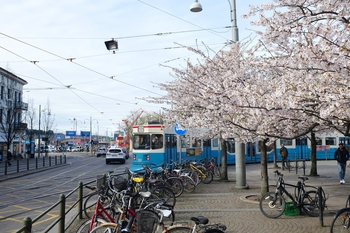Income disparities increasing within and between Nordic regions – State of the Nordic Region 2024

The Nordic Region is undergoing significant demographic changes. Long-term challenges stem from record-low birth rates and an aging population. In 2022, the number of deaths exceeded the number of births for the first time. Fertility rates in the Nordic Region have dropped below replacement levels. As a result, the Nordic countries face declining populations, which is being felt especially hard in rural areas. Finland, in particular, stands out with its low fertility and increased childlessness.
This downward trend is balanced by positive net migration, which is now the main source of population growth. In 2022, the Nordic Region saw a sharp increase in international net migration, with 212,400 new residents, which is nearly triple that recorded in 2020. Inward migration makes the Nordic Region more diverse than before.
For example, Sweden is experiencing steady population growth driven primarily by international migration. The foreign-born population is increasing in municipalities and regions across the country, with a significant proportion of this growth occurring in cities and urban areas.
Resilience of labour markets strained by limited supply of labour and skills
The Nordic labour markets have shown remarkable resilience and recovered quickly after the initial shock from the COVID-19 pandemic. Employment rates have returned to pre-pandemic levels in many sectors. However, labour shortages in key areas such as healthcare, technology, and green industries continue to pose challenges. The report highlights the potential of targeted training and integration measures to address skills gaps and build capacity for the future. Norway, for instance, is experiencing significant demand for labour in green industries, emphasising the importance of sustainable workforce development.
Green transition and uneven growth paths in different regions
Despite the challenges of a global economy characterised by successive crises, economic indicators in the Nordic Region have remained strong. The region has an average gross domestic product (GDP) per capita of USD 80,408, well above the EU average of USD 57,098. Norway stands out even among the Nordic countries with the highest figures. Between 2021 and 2022, the Nordic economies grew twice as fast as those of the EU, demonstrating resilience and adaptability.
However, income disparities within and between regions are increasing, threatening social cohesion both locally and across the Nordic Region. New figures show that Sweden and Greenland had the highest levels of income disparities.
The green transition can serve as a potential source of growth, giving rise to new initiatives bridging the gap between urban and rural areas. The green economy is expected to generate a significant increase in employment, especially in resource-rich rural areas. Already in 2021, 25.2% of total employment in the Nordic Region was classified as green, well above the OECD average of 1.6%.
The Nordic countries have also surpassed the EU’s overall climate goals and are continuing on the path towards achieving carbon neutrality between 2035 and 2045. The report shows that the Nordic Region has made significant strides towards taking the lead in decoupling economic growth from environmental impact. Similarly, steady and stable access to fossil-free energy and the necessary skills and labour are required to keep pace with an accelerating green transition.
In the words of Gustaf Norlén, senior analyst and cartographer at Nordregio and editor of the report: “The green transition is one of the megatrends affecting the labour market. We’re already seeing changing job opportunities, shifts in skill needs, and labour shortages. We need to consider the geographical perspective and look at the regional effects of the transition.”
It can be challenging to interpret the complex ways in which various factors and forces are impacting regional development. The report includes a regional potential index that enables comparisons to be drawn between different regions. In the recently updated index, Oslo is ranked as the best-performing region, followed by Stockholm County and the capital regions in Denmark and Iceland.
The State of the Nordic Region report provides a unique survey and overview of the latest major trends in the Nordic Region. The report gives us essential insights to navigate the regions’ more challenging waters.
About the State of the Nordic Region report
The State of the Nordic Region report is produced and published by Nordregio every two years. It takes the pulse of the Nordic countries, regions, and municipalities, covering Denmark, Finland, Iceland, Norway, and Sweden, as well as the Faroe Islands, Greenland, and Åland. The latest report is the 20th edition and is based on a series of updates on the latest trends and developments. The publication provides a unique collection of statistics from across the Nordic Region, covering topics such as demography, the labour market, and economy. The report’s regional potential index shows how dynamic the different regions in the Nordic Region are based on traditional, comparable statistical parameters.



